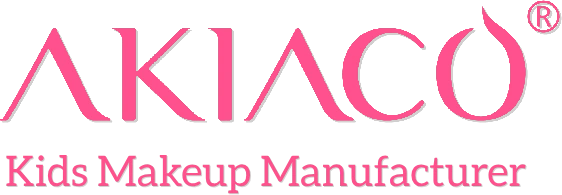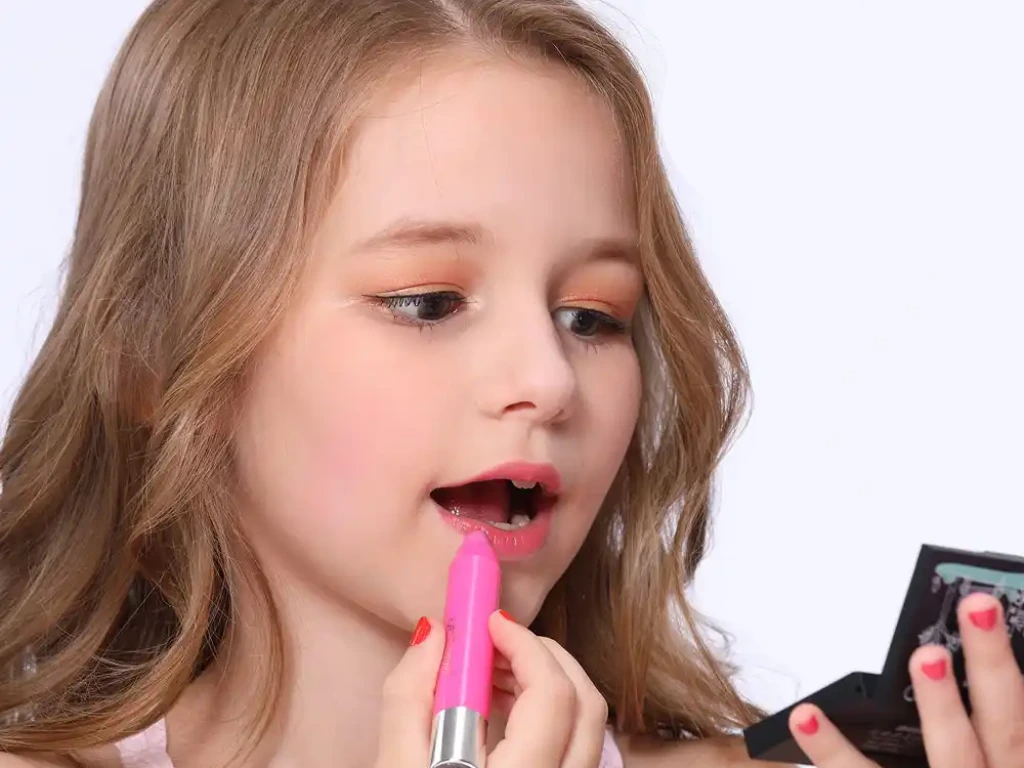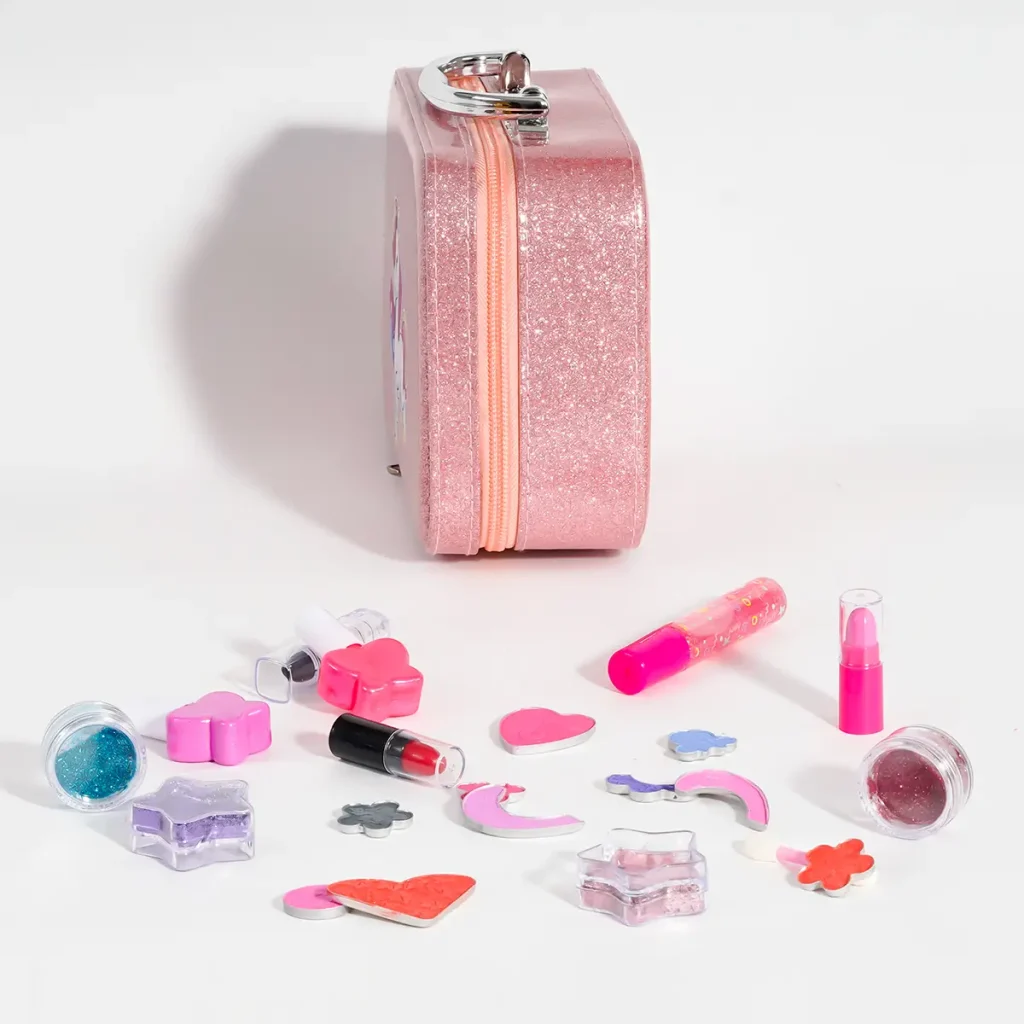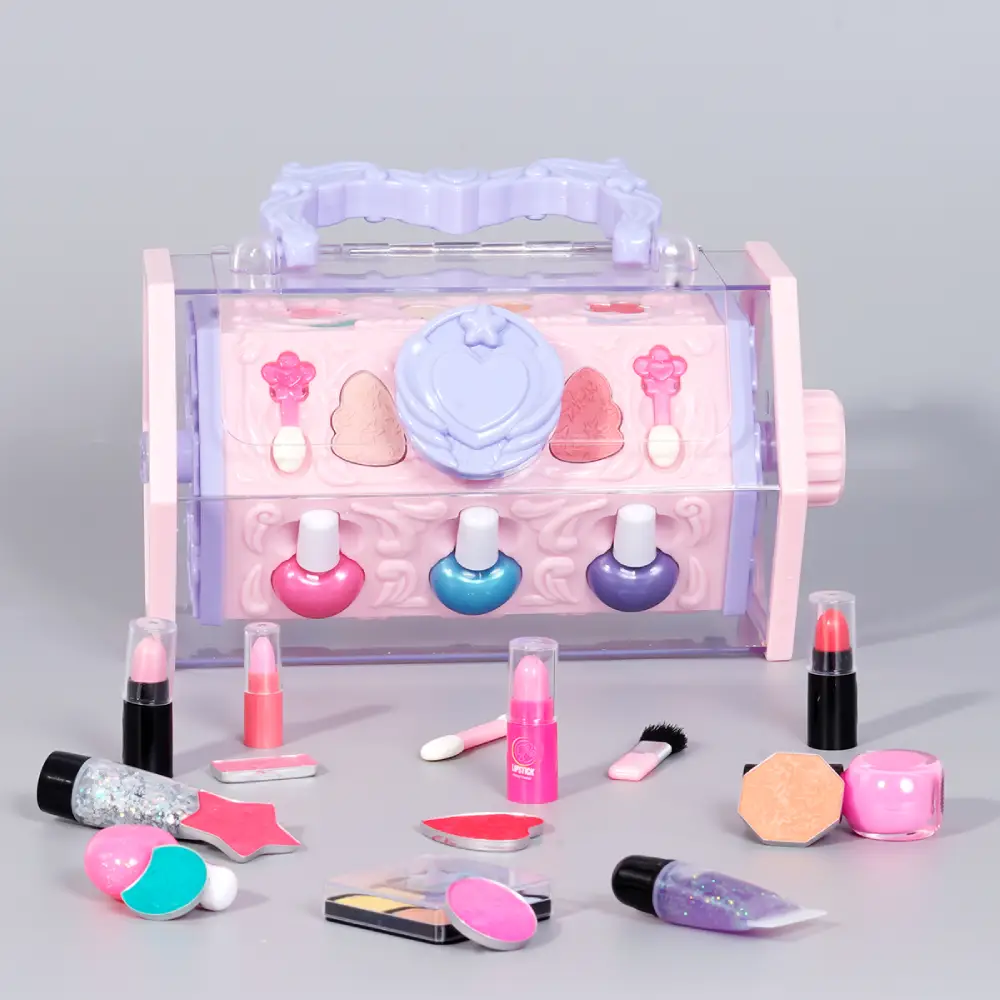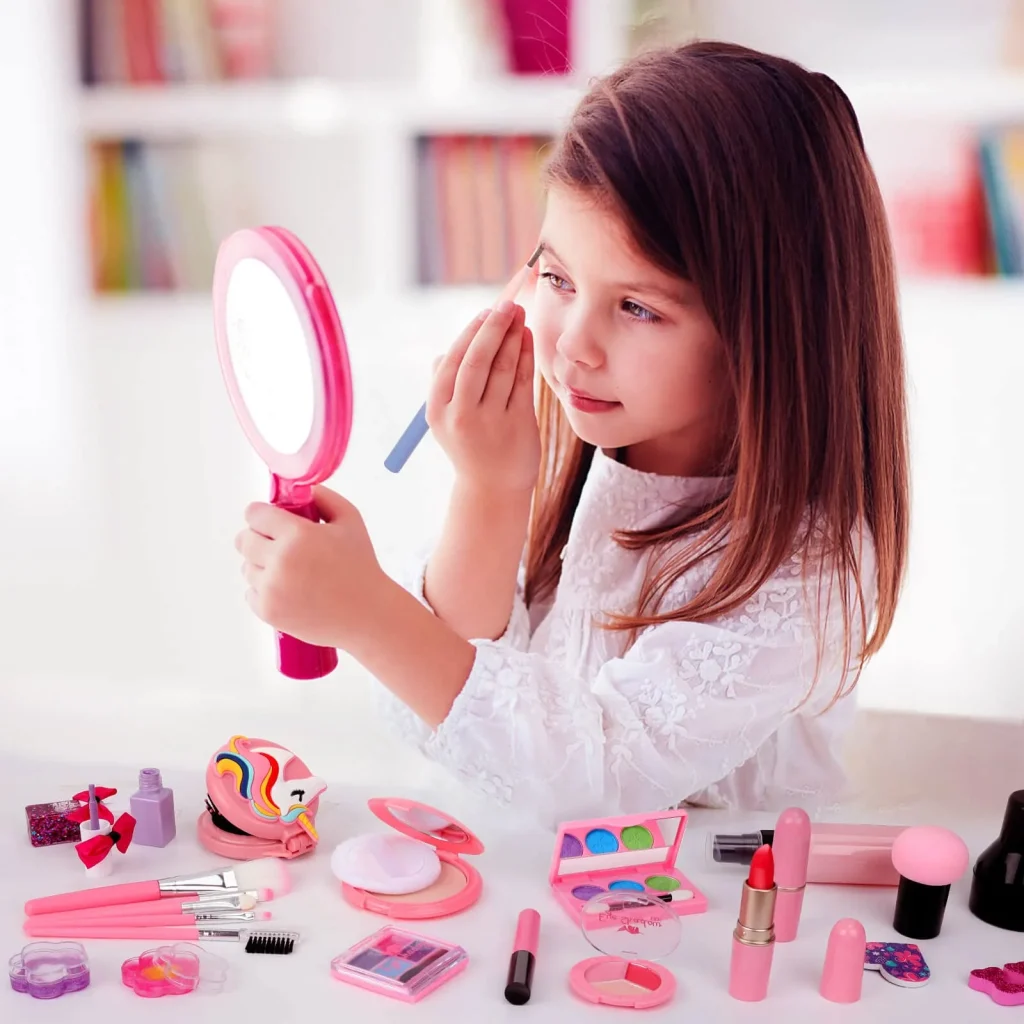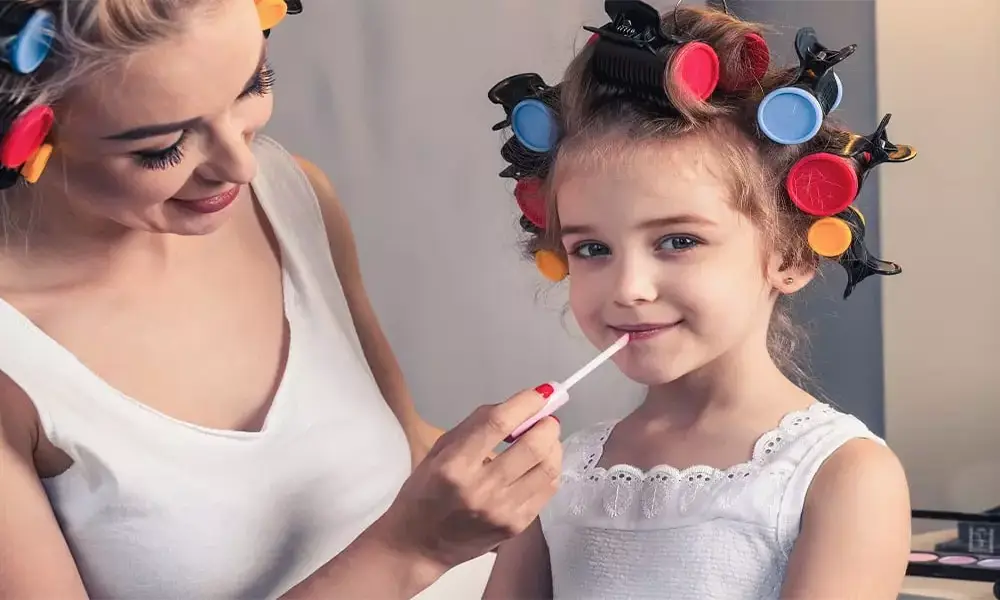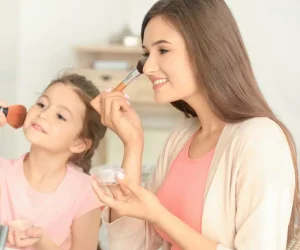Can Kids Wear Lip Gloss? A Fun and Safe Guide
Table of Contents
Children are naturally curious about the world around them, and makeup often catches their attention. Bright colors, shiny textures, and playful packaging make cosmetics look more like toys than beauty tools. For many kids, watching adults apply makeup sparks questions and an eagerness to try it themselves.
Lip gloss is usually the first cosmetic they explore. Unlike lipstick or eyeliner, gloss is simple to use and less intense in color. A small swipe gives shine without looking dramatic. Parents may allow it during playdates or costume parties because it feels safe and fun. In this way, lip gloss often becomes the gateway into kids’ makeup routines.
What Is Lip Gloss and How Does It Differ from Other Lip Products?
Lip gloss is one of the simplest cosmetics, yet it has many forms. To understand if kids can use it, we need to look at what lip gloss actually is and how it compares to other common lip products.
Definition of lip gloss in simple terms
Lip gloss is a shiny coating made for the lips. It is usually clear or lightly tinted and gives a glossy finish rather than strong color. The formula is often made with oils or waxes that spread easily. Kids like it because it feels smooth and looks playful, almost like adding a layer of sparkle.
Unlike lipstick, which leaves a bold mark, lip gloss is more about texture than color. A child can swipe it on and notice the shine without the heavy look of adult makeup. That is why it often feels less serious and more like part of dress-up play.
Key differences between lip gloss, lip balm, lip glaze, and lipstick
Lip balm is made mainly to protect and moisturize. It usually comes in plain or mild flavors and does not aim to shine. Parents may see it as a daily care product, not makeup.
Lip glaze is a hybrid—it has more shine than lipstick but more pigment than gloss. It sits between playful and bold. Kids usually do not start here because the colors can look stronger.
Lipstick is the most traditional product, offering solid color and a polished look. Its pigments are often too bold for children and carry a more “grown-up” feel.
Gloss, in contrast, stands out as the most lightweight and playful choice. It adds shine without changing a child’s face too much. This balance explains why lip gloss is often the first stop when exploring kids makeup.
Can Kids Wear Lip Gloss? Understanding the Big Question
The question of whether kids should wear lip gloss often comes up for parents. It is not only about beauty—it also touches on health, culture, and childhood identity.
Age-appropriate perspectives on lip gloss use
For younger children, lip gloss is usually tied to play. A five-year-old might wear it during dress-up without thinking of beauty standards. At this stage, it works more like a costume accessory than a cosmetic.
As kids grow older, especially around pre-teen years, the meaning may shift. Lip gloss can become a way to express independence or explore personal style. Pediatricians often remind parents that moderation and supervision are important, especially since children’s skin is more sensitive (AAP, 2019).
Social and cultural attitudes toward kids wearing makeup
Different cultures have very different views. In some places, a little gloss for a school event or holiday is harmless. In others, makeup for children is seen as too mature. Families often set rules based on values, traditions, and comfort levels.
Peer influence also plays a role. A child may ask for gloss after seeing friends use it, or because a favorite TV character does. Parents then face the task of balancing social belonging with what feels age-appropriate at home.
Safety Considerations for Kids Wearing Lip Gloss
When asking if kids can wear lip gloss, safety is always the first concern. Children’s skin is thinner and more reactive, so even mild formulas may cause issues.
Common cosmetic ingredients and their effects on children
Lip gloss often contains oils, waxes, and colorants. While most are approved for cosmetic use, some ingredients may not be ideal for kids. For example, strong fragrances or dyes can trigger irritation. A study in Pediatric Dermatology (2018) noted that children are more likely to experience allergic contact reactions compared to adults.
Preservatives, such as parabens or formaldehyde-releasing agents, can also raise concerns. Although safe in low amounts for adults, their long-term effect on children has been less studied. Parents should watch for redness, dryness, or itching after use.
Identifying non-toxic and child-safe formulations
When choosing gloss for kids, simple formulas are best. Non-toxic, fragrance-free options reduce the chance of skin irritation. Labels that highlight “dermatologist-tested” or “hypoallergenic” can be helpful, though not a guarantee.
Parents can test a small patch on the skin before full use. If no reaction appears in 24 hours, the product is usually safe to try. Checking regulatory guidance, like the FDA’s list of approved color additives, is another way to ensure safer use.
The Role of Lip Gloss in Children’s Play and Self-Expression
For many children, lip gloss is more than a beauty product. It often becomes part of play, a tool for role-playing, and a safe way to test identity.
Lip gloss as part of pretend play and dress-up
Dress-up has always been a classic childhood game. Whether pretending to be a movie star, a teacher, or even a superhero, children use props to build their stories. Lip gloss often works like a finishing touch, giving a sense of character.
Imagine a child preparing for a “stage show” in the living room. A quick swipe of gloss feels like part of the costume. In this sense, the gloss is not about appearance but about helping the child step deeper into the role.
Boosting creativity and confidence in safe environments
Lip gloss can also serve as a small confidence booster. When children see a shine on their lips, they may feel “ready” for a game or a presentation at school. The effect is more about mindset than makeup.
Safe environments are key. At home or during supervised play, gloss becomes a harmless prop. Parents can encourage kids to treat it as part of creativity, much like paint for art or costumes for theater, rather than as a tool for changing how they look.
Dermatological and Health Aspects of Lip Gloss for Kids
Children’s lips and skin are different from adults. They are thinner, less oily, and more prone to dryness. Because of this, lip gloss can affect kids in unique ways.
Skin sensitivity and allergic reactions
Some glosses contain dyes, scents, or flavorings. These can irritate sensitive lips or trigger allergies. In children, the barrier function of the skin is not fully developed, so reactions may appear more quickly. Symptoms can include redness, swelling, or mild itching.
Reports in Contact Dermatitis Journal (2019) suggest that fragrance mix and certain preservatives are among the top causes of allergic reactions in younger users. While not life-threatening, these reactions can be uncomfortable and discourage kids from healthy skin habits.
Pediatric and dermatologist guidance on safe use
Most pediatricians and dermatologists agree that occasional use of simple, non-toxic gloss is safe. They often advise parents to choose products labeled fragrance-free and to avoid heavy pigments.
Doctors also recommend limiting use to special occasions or supervised play. This helps reduce unnecessary exposure while still allowing kids to enjoy the experience. When in doubt, a patch test on the arm or wrist before use is a simple precaution.
Educational Benefits of Introducing Lip Gloss Responsibly
Introducing lip gloss to children can be more than a playful activity—it can also serve as a small lesson in hygiene, responsibility, and self-awareness.
Teaching hygiene and personal care
Applying lip gloss gives an opportunity to teach children about clean hands, avoiding sharing, and proper storage. Explaining why they shouldn’t use another child’s gloss or leave it open reinforces simple hygiene habits.
Parents can guide kids to wipe off gloss before meals and wash their hands afterward. These routines help children understand how personal care connects to health, not just appearance.
Encouraging healthy conversations about beauty and self-image
Talking about makeup while kids play can also create space for discussions about beauty standards and self-expression. Parents can explain that gloss is fun and optional, not required to look attractive.
These conversations help children separate playful use from societal pressure. They learn that makeup is a tool for creativity, not a measure of worth, promoting positive self-image from an early age.
Cultural and Historical Perspectives on Children Using Lip Gloss
Understanding the history and cultural context of children wearing makeup can help parents make informed choices. Attitudes toward kids’ cosmetics have shifted over time and vary widely around the world.
Historical views on children and cosmetics
In past centuries, makeup for children was rare and often limited to special occasions. In Europe, small amounts of color or balm were sometimes applied during festivals or portrait sessions, but everyday use was uncommon. Societies often associated cosmetics with adulthood, so applying gloss or lipstick to children could be controversial.
Over time, some playful cosmetics emerged in the 20th century, such as tinted balms marketed as “fun” or “novelty” for girls. These early products emphasized creativity rather than beauty enhancement, showing that playful experimentation with gloss has historical precedent.
Differences across societies and traditions
Cultural norms strongly influence children’s use of makeup today. In some countries, small amounts of lip color are common for celebrations, school performances, or costume events. In others, makeup is strictly considered an adult practice, and children wearing it may be discouraged.
Families often adapt these practices according to local values, peer influence, and personal beliefs. Awareness of cultural differences allows parents to decide when and how to introduce lip gloss responsibly, balancing fun with social expectations.
Alternatives to Traditional Lip Gloss for Kids
Not all children are ready or allowed to use standard lip gloss. Fortunately, there are safe alternatives that let kids enjoy the shiny, playful aspect of makeup without risk.
Tinted balms and play makeup options
Tinted lip balms offer a safer option for kids. They provide mild color and some shine while primarily moisturizing lips. Because they contain fewer chemicals than adult lip gloss, the chance of irritation is lower.
Play makeup kits designed for children are another option. These often include soft, washable tints or glosses that mimic adult products. Kids can experiment freely without damaging their skin, which encourages creative play and imaginative expression.
Cosmetic toys and safe substitutes that mimic glossy looks
Cosmetic toys, like pretend lip gloss or “makeup sticks” made from edible or non-toxic materials, provide another safe substitute. They offer the same visual effect of shiny lips during dress-up without actual chemical exposure.
These alternatives allow children to practice makeup application, coordinate looks with costumes, and engage in social play. Parents can supervise while still letting kids explore style and self-expression safely.
Practical Tips for Parents: How to Approach Lip Gloss with Kids
Introducing lip gloss to children can be a positive experience if parents set clear rules and provide guidance. The goal is to let kids explore while staying safe and responsible.
Setting boundaries for when and where to use
Boundaries help children understand appropriate times and places for lip gloss. For example, parents might allow it only during playdates, dress-up, or costume events. Limiting use in school or daily routines helps children learn moderation and reduces potential distractions.
Clear rules also prevent sharing products, which can spread germs. Explaining why gloss is for personal use teaches respect for hygiene while supporting fun and creativity.
Choosing safe options and teaching responsible habits
Parents should select non-toxic, fragrance-free, or hypoallergenic glosses designed for children. Testing a small patch on the skin first ensures there are no adverse reactions.
Teaching kids to apply gloss carefully, store it properly, and clean their hands afterward builds responsibility. Over time, children learn that cosmetics can be playful tools while also respecting safety and personal care routines.
Conclusion
Children can enjoy lip gloss safely when parents provide guidance, choose non-toxic products, and set clear boundaries. Beyond shine, it supports play, creativity, and self-expression, helping kids explore makeup responsibly in a fun and age-appropriate way.
FAQ
There is no strict rule, but many experts suggest ages 5–7 for play makeup under supervision. At this stage, it’s often used for dress-up or school performances rather than daily wear, helping children explore in a fun but safe way.
Yes. Kids makeup is usually made with milder, non-toxic ingredients and is often washable with water. Unlike adult cosmetics, which may contain stronger pigments and chemicals, children’s products are designed mainly for play and short-term use.
Children’s skin is more delicate and can react faster to certain ingredients. Using strong adult cosmetics at a young age may cause irritation, dryness, or allergies. That’s why pediatricians recommend products specifically tested for child safety.
Parents can set rules by allowing makeup for special events, parties, or playtime only. This way, children get to explore self-expression while learning that makeup is optional, not something required for daily life or self-worth.
Yes. Makeup play can teach hygiene, responsibility, and even creativity. Applying products encourages fine motor skills, while conversations about beauty help children build confidence and develop a healthy self-image early on.
